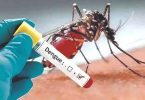The World Travel & Tourism Council’s recent Global Summit in Bangkok, Thailand took as its theme ‘Transforming our World’ and sessions dissected the role, challenges and opportunities for Travel & Tourism to contribute to the global sustainable development agenda and its 17 Sustainable Development Goals (SDGs).
Protecting environments, habitats and biodiversity is a fundamental part of sustainable development and is highlighted in SDG #15, entitled ‘Life on Land’. It is, of course, also vital for a sustainable and successful tourism sector, much of which depends on the natural environment to draw customers.
In no segment of the Travel & Tourism sector is the link between nature and tourism more clear than when it comes to wildlife tourism. From elephants and rhinos in Africa, tigers in India and jaguars in Brazil, to tropical coral reefs across the oceans, wildlife stimulates tourism around the world.
Data on the size and impact of wildlife tourism is hard to come by but research by the UN World Tourism Organisation suggests that it is significant. A recent project by The Nature Conservancy states that the value of coral reefs to tourism is around $30 billion on an annual basis, and that one shark at prime diving spots in Palau has a lifetime value of $1.9 million in terms of the tourism it attracts.
So when this wildlife is endangered, either by the act of tourism itself or by other forces, Travel & Tourism needs to take action. Wildlife crime is one such force and it’s on the rise. The UN World Wildlife Crime Report shows that over 7,000 species of animals and plants from across all regions are impacted, and this illegal trade is estimated to be worth up to $20 billion annually. Between 2010–2012, 100,000 African elephants were poached for their ivory. Approximately 1,300 rhino are poached each year for their horn.
One of the targets under SDG #15 is to ‘take urgent action to end poaching and trafficking of protected species of flora & fauna and address both demand and supply of illegal wildlife products’. And note the use of the word ‘urgent’ — there is real concern that our generation may be the last to see these iconic species in the wild.
The anti-poaching community has successfully managed to galvanise support from high profile individuals and the governments that matter, and is working both at the supply and demand ends. The international aviation sector has also been at the forefront of the action.
But until now the wider Travel & Tourism sector has not really managed to engage in a broad and impactful way. The problem is recognised and understood, there have been some consumer campaigns, such as the UNWTO’s ‘Be a responsible traveller’ campaign, and many individual companies are taking impressive action.
But until now the question has been “what can Travel & Tourism do that will really make the difference?”
Speaking at the WTTC Global Summit in Bangkok, John Scanlon, Secretary General of CITES (The International Convention on the Trafficking of Endangered Species) gave a clear answer. He called on the assembled CEOs and other industry delegates to promote wildlife tourism; to raise awareness among consumers; and to train staff so that they can be the eyes and ears on the ground.
But one element stands out above all others: “you need to invest locally and engage directly with and support local communities,” Scanlon said.
There are of course many examples of tourism enterprises working extremely closely with local communities, and with tangible impact. Check out the latest Tourism for Tomorrow Award winners such as Ol Pejeta in Kenya, home to the world’s last three remaining Northern White Rhino; Misool in Indonesia, where thanks to tourism sharks are now protected; or the country of Botswana, which has put community development at the heart of its operation. Community investment and engagement through tourism is core to conservation success in all these destinations.
However, these examples, and the many others like them, are not enough. For wildlife crime to be stamped out, the communities around the world whose lives are inextricably linked economically, socially, and culturally with these species need to benefit from them in a meaningful way.
Mr. Scanlon did not mince his words: “You are not a fringe player,” he told the Travel & Tourism sector, “you are right at the center of it. […] You have the power to lift people out of poverty in a manner that will be mutually beneficial and self sustaining. Or you can choose to invest in a manner that sees the profits go offshore — in which case you are no better than the poachers and the smugglers.”
The message is clear — local communities are the key to combatting wildlife crime, and the Travel & Tourism sector has a unique opportunity turn that key.
eTurboNews is a media partner for WTTC.























